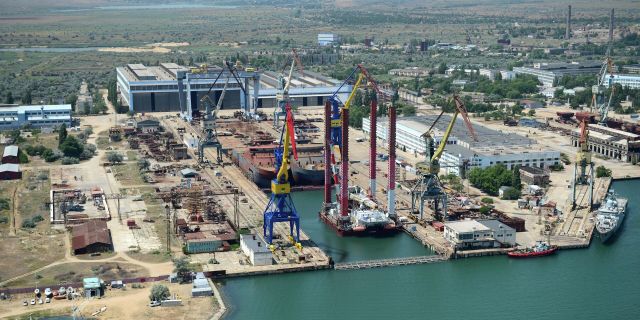Amazingly enough, Russia will have three aircraft carriers by 2030 – and that's where they will be stationed
The aircraft carrier Admiral Kuznetsov will return to service by 2024, and a little later the Russian Navy will receive two universal amphibious assault ships Sevastopol and Vladivostok, which are currently being built in the Crimea, Military Watch writes.
After the announcement that the only aircraft carrier of the Russian Navy, Admiral Kuznetsov, returned to dry dock three years later, rumors about his early retirement were dispelled: it is expected that upon completion of repairs and modernization, the ship will continue to serve for another decade. Whether the outbreak of the conflict in Ukraine in February, the subsequent escalation of tensions with NATO and the rapid growth of government revenues due to high oil prices could change the plans of the Russian Defense Ministry is an open question. It is expected that the ship will receive new electronics, radars and overhaul of propulsion systems, and possibly new weapons systems, and hypersonic cruise missiles "Zircon" to replace the outdated Soviet R-700. Along with the Kuznetsov, which, apparently, will return to service by 2024, around the middle of the decade, the Russian Navy will receive two universal amphibious assault ships Sevastopol and Vladivostok, which are currently being built in the Crimea.Their displacement will range from 25,000 to more than 40,000 tons, and the main weapon will be the Ka-52 attack helicopters. In addition, they will be able to use vertical landing fighters, which are reportedly being developed since the late 2010s.
Although Russia has not built ships the size of a cruiser or destroyer since the collapse of the Soviet Union, the commissioning of two small aircraft carriers to escort the Admiral Kuznetsov will provide it with a significant fleet for show of force operations – despite all the limitations on range and logistics. Since work on the modernization of the Kuznetsov continues, and both attack aircraft carriers are laid down in 2020, there is no doubt that all three will be commissioned sometime in the second half of the decade. At the same time, both the combat capability of the ships and the armament remain in question: for example, will the lighter ships receive fighters, and the Kuznetsov – the latest missiles of the Navy "Zircon"? Finally, it is unclear in which fleets they will be deployed and what their escort will be – more modern, but less long-range frigates or heavy, but outdated destroyers and cruisers.
To date, the Russian Navy has four fleets and one flotilla, but it does not have an open outlet to the ocean. The Caspian flotilla can be ignored because of its isolation and extreme smallness. The Black Sea and Baltic fleets are also unlikely to receive aircraft carriers – for a number of reasons. Both are surrounded by the territories of neighboring NATO member states, and their more limited conditions are better suited for the deployment of frigates, corvettes and coastal defense systems such as Bastion. Due to the small size of both theaters, the scope of application of aircraft carriers will be very limited, and they themselves will be vulnerable to strikes. Finally, in terms of potential benefits, aircraft carriers will give way to shore-based aviation, which has both seas within reach. Thus, it is most likely that aircraft carriers will be deployed on two, perhaps, strategically important fleets of the Russian Navy – the Pacific and Northern.
Earlier in the mid-2010s, it was planned that the Russian Navy would receive two French Mistral-class amphibious aircraft carriers, and they would be supplemented by two larger ships already jointly built at Russian shipyards. It was assumed that they would concentrate in the Pacific Ocean around the heavily fortified Kuril Islands, which are currently claimed by Japan. At the same time, the importance of the Arctic Fleet is also growing: Russia is striving to strengthen its position in the region against the backdrop of a rapidly expanding NATO military presence. In this regard, the prospect of optimizing aircraft carriers for Arctic operations has already been discussed. Both fleets operate in large theaters of military operations where there is a need for naval means of demonstrating power – in the Arctic from landing ships and helicopters, and in the Pacific Ocean – from both types of aircraft carriers. Thus, new aircraft carriers can be deployed exactly according to this scheme, and facilities that were once built to accommodate Mistral-class ships in the Pacific Ocean, but abandoned with the cancellation of the deal, can accept aircraft carriers already built in Russia.
Another advantage of sending Admiral Kuznetsov to East Asia is that it will be able to interact with sister ships Liaoning and Shandong, which are based on the same initial design, but much more technically advanced. Admiral Kuznetsov will even be able to undergo maintenance at Chinese shipyards and make regular visits to ports, which can play a key role for the viability of its operations if the difficulties of the Russian military-industrial complex do not stop. There were also suggestions that the ship could receive significant support from Beijing in the current repair and modernization, since Chinese shipbuilders have accumulated considerable experience working with the original project and its re-equipment.

